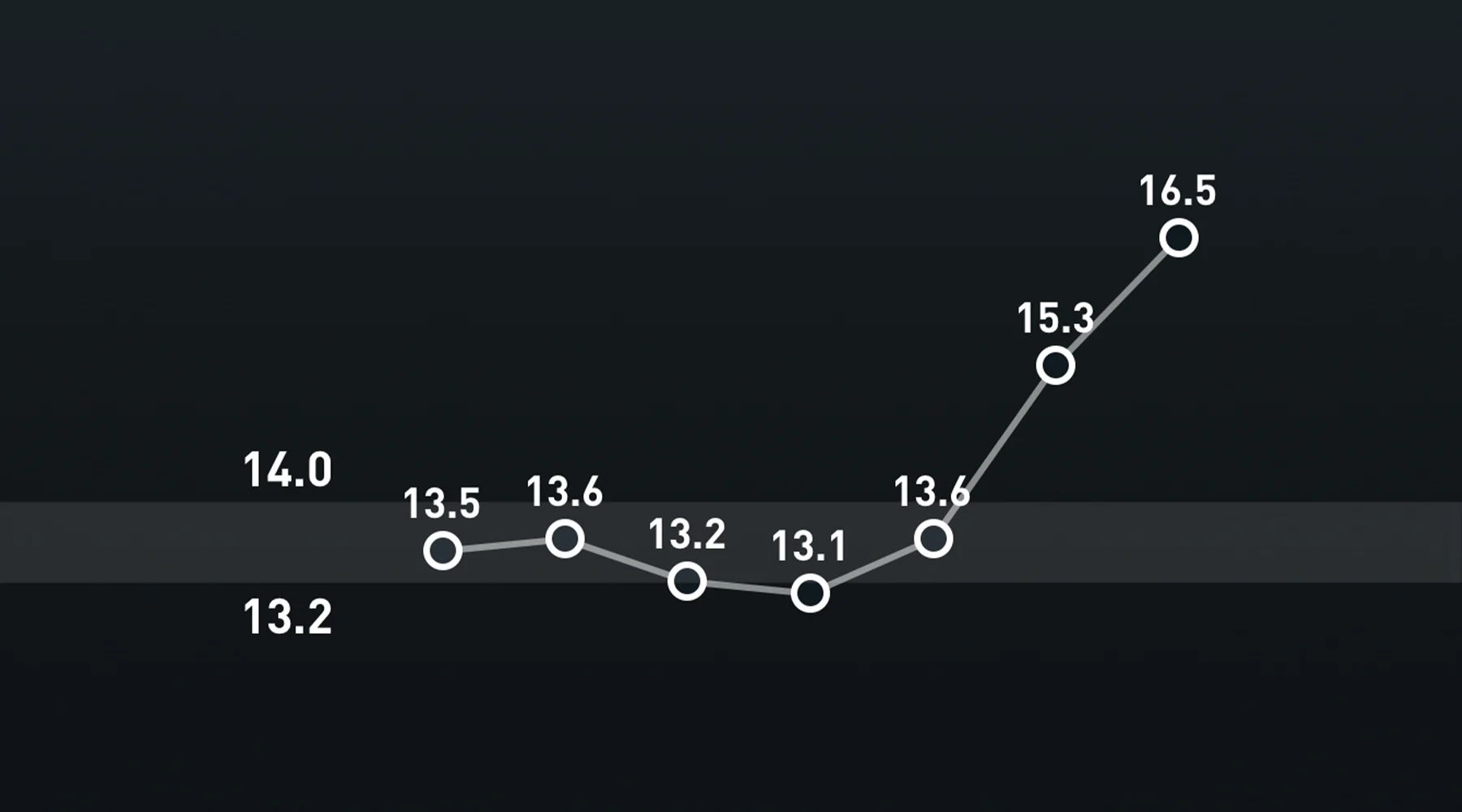Topics
- Article
- COVID-19
- Respiratory Rate
What Causes an Increased Respiratory Rate?

Your respiratory rate rises when oxygen levels don’t meet your body’s needs or carbon dioxide levels get too high. Learn what might cause an increased respiratory rate.
Respiration is controlled by receptors in the lungs that convey sensory input to the brain. Illness or injury of the lungs can cause the respiratory center of the brain to change its firing patterns and alter breathing rhythm and volume. When oxygen levels don’t meet the body’s demand, aerobic metabolism stops and energy production declines. If carbon dioxide accumulates in the bloodstream, the blood becomes more acidic and cells are damaged, leading to organ failure. Respiratory rate in adults is generally consistent from day to day and has been considered a neglected vital sign, but when it does change it is usually meaningful.
What is Considered an Elevated Respiratory Rate?
The average adult takes between 12 and 20 breaths or respirations per minute (RPM) while at rest. In adults, an elevated respiratory rate is generally considered to be more than 20 RPM. Children have significantly higher respiration rates that change as they grow. Rapid shallow breathing is referred to as tachypnea, which means you take more breaths than usual in one minute. Symptoms of tachypnea include the sensation of shortness of breath and inability to get enough air. Working out can cause a high respiratory rate as your body uses more oxygen and increases carbon dioxide production. You may breathe 3-4 times more frequently during exercise. This rapid deep breathing is called hyperpnea and it’s the appropriate response to increasing carbon dioxide production in the body.

Normal respiratory rate does not change significantly in adults, which means that even small changes may signify potential problems such as illness or injury.
What Causes Increased Respiratory Rate?
Abnormal breathing is caused by the body’s need to adjust to low oxygen or high carbon dioxide levels. Diseases, injuries, and certain drugs can lead to changes in breathing, which can indicate problems. Diseases and conditions that can increase respiratory rate include:
- Pneumonia, which is an infection that causes inflammation in your lungs’ air sacs or alveoli leading to symptoms including cough, fever, chills, and trouble breathing.
- Influenza, a virus that causes fever, cough, sore throat, body aches, and runny nose.
- Asthma and other lung conditions and diseases.
- Heart problems including congestive heart failure.
- Anxiety and stress, which can increase heart rate, blood pressure, and respiratory rate.
- Fever, the body’s response to an abnormal process happening inside it, such as an infection.
- Dehydration.
- Allergic reactions.
Non-medical reasons that may raise breathing rate include:
- Drinking alcohol in the evening.
- Caffeinated beverages such as coffee, tea or soda.
- Certain medications such as amphetamines.
- Smoking marijuana.
- High altitude.
- Poor air quality.
Respiratory Rate and COVID-19
WHOOP members have often observed high respiratory rates alongside testing positive for COVID-19. Pro golfer Nick Watney saw an increase from 14 to 18 RPM the morning he tested positive for COVID. “I checked the [WHOOP] data and my respiratory rate had gone up. I’m usually in the low 14s [and it had gone up] to the low 18s,” Nick told us on the WHOOP Podcast. Since 2020, WHOOP members have been able to log their diagnoses of COVID-19 in the Journal feature. WHOOP published a study in the journal PLOS ONE “Analyzing Changes In Respiratory Rate to Predict the Risk of Covid-19 Infection.” Learn More: Case Studies in Respiratory Rate in Time of COVID-19
What Causes a Low Respiratory Rate?
An abnormally low breathing rate, or bradypnea, is generally a rate below 12 breaths per minute in adults. You can slow your own breathing by controlling your inhales and exhales, a common relaxation practice, but that is not considered abnormal. A number of things can cause decreased respiratory rate, including:
- Opioids and other drugs.
- Sleeping aids.
- Lung disease and cancer.
- Hypothyroidism.
- Brain injuries.
- Obstructive sleep apnea.
WHOOP Monitors Your Normal Respiratory Rate

WHOOP monitors your respiratory rate on a nightly basis. You can view your average RPM in the WHOOP app.
WHOOP measures respiratory rate during sleep using a phenomenon called Respiratory Sinus Arrhythmia. Basically, your heart rate increases when you inhale and decreases when you exhale. WHOOP tracks respiratory rate during sleep when your body is in a restful state for the most reliable consistent readings. Respiratory rate is a component of the WHOOP recovery metric, along with sleep, resting heart rate, and heart rate variability. You can view your nightly respiratory rate in the WHOOP app. The WHOOP Health Monitor helps you track your nightly metrics and lets you know if your respiratory rate strays outside your personal norm. WHOOP is not a medical device and is not intended to diagnose COVID-19, the flu or any other disease, and should not be used as a substitute for professional medical advice, diagnosis or treatment.